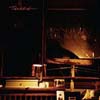 On this double CD, their third release, Jesse Poe's Tanakh have abandoned songwriting and shifted their attention to creating dark atmospheric soundscapes. Seven musicians contribute to the project, including Pat Best, who must have felt right at home here, as the shifting drones sometimes recall his work with Pelt. The music sounds very much a product of the cavernous temple in which it was recorded.
On this double CD, their third release, Jesse Poe's Tanakh have abandoned songwriting and shifted their attention to creating dark atmospheric soundscapes. Seven musicians contribute to the project, including Pat Best, who must have felt right at home here, as the shifting drones sometimes recall his work with Pelt. The music sounds very much a product of the cavernous temple in which it was recorded.
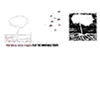 When a band concocts a formula that is not easily classifiable and isalmost indecipherable at times yet is complete compelling and causeslong periods of not wanting to turn the repeat function off on the CDplayer, they are to be congratulated. Infectious, sinewy, ever-morphingand pulsing with energy almost describe any music from the Berg SansNipple, but these songs are particularly demonstrative of theircreative abilities. The quiet chimes that start the proceedings arequickly augmented by beefy hip hop drums and falsetto vocals that areunrecognizable and cut up jitter-style as the need arises. Low keys arejoined by high squelches and a lovely chimes breakdown, and the trackdrives on with the sinister underbelly of a corrupt afterlife. Perfectsounds for Purgatory, hence the track's title, and just when it seemslike it's all over the wattage increases to 150% for the last twominutes. Then horns break the darkness open and usher in the holinessof "Hark, the Poonie Angel Sings!" Processed vocals mixed with keyscreate an eerie choir from the beyond, and tainted breathy whispersinfect like the dream passages of REM sleep. The track does notoverstay its welcome, luckily, though I found it puzzling that theangels get less say than the poor souls in Purgatory; maybe they'rejust less interesting. "Swordfighting" is a bit crunchier, with a noirbackdrop, much like the theme music for a man on a revenge streak,searching out the next person in the group who ratted him out. The sameghostly choir is present, like the souls to be redeemed egging on theevil work to be done. At four minutes it is a bit repetitious, but notoverbearingly so. The CD closes with the more experimental and quietpulsing of "Memory Hole," and in just twenty minutes the group hasraised hairs and slicked them back, applying a relaxing massage rightat the end. It's a gamut to be run, and they pass without incident.
When a band concocts a formula that is not easily classifiable and isalmost indecipherable at times yet is complete compelling and causeslong periods of not wanting to turn the repeat function off on the CDplayer, they are to be congratulated. Infectious, sinewy, ever-morphingand pulsing with energy almost describe any music from the Berg SansNipple, but these songs are particularly demonstrative of theircreative abilities. The quiet chimes that start the proceedings arequickly augmented by beefy hip hop drums and falsetto vocals that areunrecognizable and cut up jitter-style as the need arises. Low keys arejoined by high squelches and a lovely chimes breakdown, and the trackdrives on with the sinister underbelly of a corrupt afterlife. Perfectsounds for Purgatory, hence the track's title, and just when it seemslike it's all over the wattage increases to 150% for the last twominutes. Then horns break the darkness open and usher in the holinessof "Hark, the Poonie Angel Sings!" Processed vocals mixed with keyscreate an eerie choir from the beyond, and tainted breathy whispersinfect like the dream passages of REM sleep. The track does notoverstay its welcome, luckily, though I found it puzzling that theangels get less say than the poor souls in Purgatory; maybe they'rejust less interesting. "Swordfighting" is a bit crunchier, with a noirbackdrop, much like the theme music for a man on a revenge streak,searching out the next person in the group who ratted him out. The sameghostly choir is present, like the souls to be redeemed egging on theevil work to be done. At four minutes it is a bit repetitious, but notoverbearingly so. The CD closes with the more experimental and quietpulsing of "Memory Hole," and in just twenty minutes the group hasraised hairs and slicked them back, applying a relaxing massage rightat the end. It's a gamut to be run, and they pass without incident.  Nagisa Ni Te is primarily the work of Shinji Shibayama and his partnerand muse Masako Takeda. Over the course of four albums, the Japanesepsych-folk duo has carved out their own niche among their moreavant-leaning Japanese contemporaries, creating subtle and lovely popmusic that floats by like a gentle summer breeze. Their name, whichmeans "On the Beach" in Japanese, seems to be a direct reference toNeil Young's classic album of the same name, and they do seem to takesome musical inspiration from Young as well. Though their music at timeseems minimal and unadorned, there is a deceptive simplicity at work intheir arrangements. A wide range of instruments is used, as well asgenius multi-tracked vocal harmonies, but always in a refreshinglyuncomplicated way that never seems too calculated. Their chief subjectis nature, and love of the same, as evidenced by the included lyrics,given an English translation by The Wire's resident Japanophile Alan Cummings. The Same As a Flowerevokes the pastoral simplicity of nature in understated surrealistterms, where the sky is "tall as a flower," "brambles taste sweet" andthe sky is "shattered by fish." The album seems to be the duo's mostgelled statement thus far, full of beautiful melodies that etchedthemselves into my brain quite naturally after only a few listens. Theopening title track has a catchy chorus and a catchier melody, a simplesweet duet about the contemplation of a flower. Though Nagisa Ni Te'sprogressive tendencies and eclectic influences seem often to suggestIncredible String Band or other 60s acts, their consistentlyuncluttered arrangements put them closer in style to Belle andSebastian, without the twee affectation. Using only an electric guitarand evocative vocal overdubbing, "River" is able to hauntingly evokethe gentle currents and eddies of the song's namesake. "Wife" is aninstrumental intermission that recalls George Harrison's solo work, orthe Beach Boys' "Fall Breaks and Back to Winter." "Bramble" floats byat a leisurely pace for 11 minutes, ending with a hypnotic guitar andmellotron duet. It's organically psychedelic without resorting to thetired repertoire of studio gimmickry that characterizes most modernpsych. Truly, the album is lighter than air, and constantly threatensto float away like so many dandelion spores. But while it's stilltangible, it's as lovely and uncluttered as any psych album you'relikely to hear all year.
Nagisa Ni Te is primarily the work of Shinji Shibayama and his partnerand muse Masako Takeda. Over the course of four albums, the Japanesepsych-folk duo has carved out their own niche among their moreavant-leaning Japanese contemporaries, creating subtle and lovely popmusic that floats by like a gentle summer breeze. Their name, whichmeans "On the Beach" in Japanese, seems to be a direct reference toNeil Young's classic album of the same name, and they do seem to takesome musical inspiration from Young as well. Though their music at timeseems minimal and unadorned, there is a deceptive simplicity at work intheir arrangements. A wide range of instruments is used, as well asgenius multi-tracked vocal harmonies, but always in a refreshinglyuncomplicated way that never seems too calculated. Their chief subjectis nature, and love of the same, as evidenced by the included lyrics,given an English translation by The Wire's resident Japanophile Alan Cummings. The Same As a Flowerevokes the pastoral simplicity of nature in understated surrealistterms, where the sky is "tall as a flower," "brambles taste sweet" andthe sky is "shattered by fish." The album seems to be the duo's mostgelled statement thus far, full of beautiful melodies that etchedthemselves into my brain quite naturally after only a few listens. Theopening title track has a catchy chorus and a catchier melody, a simplesweet duet about the contemplation of a flower. Though Nagisa Ni Te'sprogressive tendencies and eclectic influences seem often to suggestIncredible String Band or other 60s acts, their consistentlyuncluttered arrangements put them closer in style to Belle andSebastian, without the twee affectation. Using only an electric guitarand evocative vocal overdubbing, "River" is able to hauntingly evokethe gentle currents and eddies of the song's namesake. "Wife" is aninstrumental intermission that recalls George Harrison's solo work, orthe Beach Boys' "Fall Breaks and Back to Winter." "Bramble" floats byat a leisurely pace for 11 minutes, ending with a hypnotic guitar andmellotron duet. It's organically psychedelic without resorting to thetired repertoire of studio gimmickry that characterizes most modernpsych. Truly, the album is lighter than air, and constantly threatensto float away like so many dandelion spores. But while it's stilltangible, it's as lovely and uncluttered as any psych album you'relikely to hear all year. 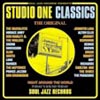 On the 4th of May this year Clement "Sir Coxsone" Dodd died. He is oneof the most important figures in the history of reggae music; he openedand ran the now famous Studio One recording facility in Kingston, waspresent and perhaps partially responsible for many of the stylisticdevelopments within reggae, and put out some of the first records fromsuch individuals as the Heptones, Burning Spear, and the Wailers."Studio One Classics" collects 18 tracks from 1964 to 1981 and itclearly demonstrates the brilliance, depth, and soul of reggae and allits variations. Carlton and the Shoes of 1968 are placed next to theHeptones of 1978 and the Wailers from 1965 are heard next to tracksfrom Sugar Minott and Lone Ranger from 1980 and 1981; while the styleschange and shift from track to track and attitudes slip from relaxed topoppin' and feverish, what this compilation makes so evident is thatthere is more heart and love in these tracks than any dancehall orR&B performer today could ever hope to touch on. Hearing DennisBrown perform "No Man Is an Island" or Sound Dimension bleed "RockfortRock" is like a slap to the face because its thatmuch better than anything that's been thrown onto the radio ortelevision screen. And while I can appreciate Bob Marley, listening theWailers bop through "Simmer Down" makes me wonder why this part of hiscareer hasn't received more attention than anything else. Every lasttrack feels fresh, too, with songs like "Rougher Yet" and "Pretty LooksIsn't All" exhibiting all the sounds and feelings that a large numberof future dub, reggae, soul, and jazz lovers would emulate and developout of. This is an excellent set of songs from one of the mostimportant, if not the most important, studios in all of reggae.The beginning of every change in reggae history can be heard here andat the top of its form - it simply doesn't get much better than this.If only Prince Far I and Toots and the Maytals had been includede onthis compilation, then it could have been perfect.
On the 4th of May this year Clement "Sir Coxsone" Dodd died. He is oneof the most important figures in the history of reggae music; he openedand ran the now famous Studio One recording facility in Kingston, waspresent and perhaps partially responsible for many of the stylisticdevelopments within reggae, and put out some of the first records fromsuch individuals as the Heptones, Burning Spear, and the Wailers."Studio One Classics" collects 18 tracks from 1964 to 1981 and itclearly demonstrates the brilliance, depth, and soul of reggae and allits variations. Carlton and the Shoes of 1968 are placed next to theHeptones of 1978 and the Wailers from 1965 are heard next to tracksfrom Sugar Minott and Lone Ranger from 1980 and 1981; while the styleschange and shift from track to track and attitudes slip from relaxed topoppin' and feverish, what this compilation makes so evident is thatthere is more heart and love in these tracks than any dancehall orR&B performer today could ever hope to touch on. Hearing DennisBrown perform "No Man Is an Island" or Sound Dimension bleed "RockfortRock" is like a slap to the face because its thatmuch better than anything that's been thrown onto the radio ortelevision screen. And while I can appreciate Bob Marley, listening theWailers bop through "Simmer Down" makes me wonder why this part of hiscareer hasn't received more attention than anything else. Every lasttrack feels fresh, too, with songs like "Rougher Yet" and "Pretty LooksIsn't All" exhibiting all the sounds and feelings that a large numberof future dub, reggae, soul, and jazz lovers would emulate and developout of. This is an excellent set of songs from one of the mostimportant, if not the most important, studios in all of reggae.The beginning of every change in reggae history can be heard here andat the top of its form - it simply doesn't get much better than this.If only Prince Far I and Toots and the Maytals had been includede onthis compilation, then it could have been perfect. 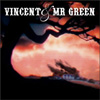 Someone in this band has been to hell and back; the vocalist emulates enough emotions to make a manic depressive feel good about the way life is going. Depravity, arson, prostitution, obsession, betrayal, manipulation, and alcoholism are just a few of the topics the lyricist conjures up in the first half of the album. The music is a fitting combination of manipulated beats, chamber music, sickly lounge deliveries, and darkly lit soundscapes fluctuating between old phonograph recordings from the 1920's and blazingly confrontational arrangements that could've only been born out of the heart of a psychopath.
Someone in this band has been to hell and back; the vocalist emulates enough emotions to make a manic depressive feel good about the way life is going. Depravity, arson, prostitution, obsession, betrayal, manipulation, and alcoholism are just a few of the topics the lyricist conjures up in the first half of the album. The music is a fitting combination of manipulated beats, chamber music, sickly lounge deliveries, and darkly lit soundscapes fluctuating between old phonograph recordings from the 1920's and blazingly confrontational arrangements that could've only been born out of the heart of a psychopath.
 Last I heard from this Japanese label was their release of Fennesz's Live in Japan,something of a surprise addition to that artist's catalogue, and onethat offered both a glimpse at new developments in his too-familiarstyle, and a pleasantly indulgent rebuff against those critics ready topredict, or pounce on, a new masterpiece. On its latest release, Headzgives another digital guitar hero, Rafael Toral, a similar opportunityto avoid quick canonization and indulge some new ideas over the courseof one disc-length track. On past records, Toral produced everythingfrom ecstatic, shoegazing jams to multi-sectioned, epic-length texturalexplorations, often using the juxtaposition between his moreintentionally rockist moments and the purer ambient passages to createan unique soundworld that embraces both with equal fervor. Harmonic Series 2 is a significant departure from the digestible, pop-length drones that filled Toral's last record, The Violence of Discovery, The Calm of Acceptance,though the switch to less-concise, more demanding composition iswelcome. The 43-min. piece, for sinewave, guitar and analogelectronics, marks the artist's first use of the computer as autonomousmusical instrument, its waveforms acting as the synthetic equivalent ofa guitarist's blending harmonic tones. Toral's use of the sinewave liesfar from the alienating compositions usually associated with such pureand relentless sounds, and while Harmonic Series does avoid thecosmic elegance that has characterized the artist's work thus far, thepiece remains surprisingly inviting. Weightless strands of e-bowedfeedback and gently throbbing harmonic layers intertwine with thecomputer's tones to create the most substantial portions of thecomposition, a fluid surface of constant dissolve and regeneration.Through a meticulous cycle of blends and pans, Toral reaches a powerfulsonic density from the tight flux of three or four blank tones ratherthan a congestion or distortion of the stereo field. The gritty,psychedelic edge that touched Toral's early work is totally absent;instead Harmonic Series seems to develop out of the resultingnegative space, a lyric-less tone poem to the information age, full ofhaunting, passive currents. Parts of the piece even recall the warpingeffects in Coil's Time Machines. The artwork tells it best:gone are the floating passenger jets that graced the covers of so manyToral recordings; here he offers only dark futurism, an empty skystalked by silent electrical towers. Given the track's length and theresistance of the pure tones to any recognizable or repeated dynamic,an overarching mood or directive within Harmonic Series is hardto locate. The steady flow and warm tonalities of the piece keep itinviting, but never to the rapturous extremes of the artist's otherlong-form composition, Wave Field. It seems fitting, if a bitpredictable or even overstated on such a sprawling release, that theartist's embrace of new technology should lead his music towards morewayward, alien territories.
Last I heard from this Japanese label was their release of Fennesz's Live in Japan,something of a surprise addition to that artist's catalogue, and onethat offered both a glimpse at new developments in his too-familiarstyle, and a pleasantly indulgent rebuff against those critics ready topredict, or pounce on, a new masterpiece. On its latest release, Headzgives another digital guitar hero, Rafael Toral, a similar opportunityto avoid quick canonization and indulge some new ideas over the courseof one disc-length track. On past records, Toral produced everythingfrom ecstatic, shoegazing jams to multi-sectioned, epic-length texturalexplorations, often using the juxtaposition between his moreintentionally rockist moments and the purer ambient passages to createan unique soundworld that embraces both with equal fervor. Harmonic Series 2 is a significant departure from the digestible, pop-length drones that filled Toral's last record, The Violence of Discovery, The Calm of Acceptance,though the switch to less-concise, more demanding composition iswelcome. The 43-min. piece, for sinewave, guitar and analogelectronics, marks the artist's first use of the computer as autonomousmusical instrument, its waveforms acting as the synthetic equivalent ofa guitarist's blending harmonic tones. Toral's use of the sinewave liesfar from the alienating compositions usually associated with such pureand relentless sounds, and while Harmonic Series does avoid thecosmic elegance that has characterized the artist's work thus far, thepiece remains surprisingly inviting. Weightless strands of e-bowedfeedback and gently throbbing harmonic layers intertwine with thecomputer's tones to create the most substantial portions of thecomposition, a fluid surface of constant dissolve and regeneration.Through a meticulous cycle of blends and pans, Toral reaches a powerfulsonic density from the tight flux of three or four blank tones ratherthan a congestion or distortion of the stereo field. The gritty,psychedelic edge that touched Toral's early work is totally absent;instead Harmonic Series seems to develop out of the resultingnegative space, a lyric-less tone poem to the information age, full ofhaunting, passive currents. Parts of the piece even recall the warpingeffects in Coil's Time Machines. The artwork tells it best:gone are the floating passenger jets that graced the covers of so manyToral recordings; here he offers only dark futurism, an empty skystalked by silent electrical towers. Given the track's length and theresistance of the pure tones to any recognizable or repeated dynamic,an overarching mood or directive within Harmonic Series is hardto locate. The steady flow and warm tonalities of the piece keep itinviting, but never to the rapturous extremes of the artist's otherlong-form composition, Wave Field. It seems fitting, if a bitpredictable or even overstated on such a sprawling release, that theartist's embrace of new technology should lead his music towards morewayward, alien territories.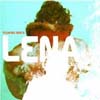 Sometime during the latter half of this year, and much to thedispleasure of my incredibly attractive girlfriend, I developed arenewed interest in dub music. Picking through CD store bins, as Iregularly do, I snagged copies of Horace Andy, Keith Hudson, and LeePerry productions, eagerly immersing myself in the fantastic reverbsand echo chambers. The latest Dubblestandart album, which I reviewed afew issues back, as well as my rediscovering the original brillianttrilogy of Pole albums, sparked my appetite for new works in the genre.Thankfully, Floating Roots,Mathias Deplanque's second album as Lena for Quatermass, more thansatiates my hunger with some of the best "digi-dub" outside of the~scape label family. "Wax Model" opens the album with a slow, exactingbeat amidst a moist palette of Vladislav Delay style synth beds. TheJamaican-influenced sound that is somewhat absent on the first trackquickly emerges on "Under False Rulers," a bass-heavy number thatfeatures one of several appearances by MC Tablloyd. Known by some forhis work with 69db of Spiral Tribe, Tablloyd's style and tone varieswildly at times, yet only occasionally interferes with Lena's busy,bubbly soundscapes. The highly danceable cut "Wah Gwan" features hismost satisfying contribution, a vibrant and perhaps nonlinear riffingtreated with delay effects. The only other vocalist on the album,one-time Black Dog collaborator Black Sifichi, contributes somedeep-throat spoken word poetry to the head-nodding "Storm Blown". Theinstrumental tracks that close out the album, including two versions of"Mountain Dub", further shows off Lena's skills as a producer, but nonemore reverent of true dub music as the title track. "Floating Roots"grooves along with a dark tone and a keen, respectful understanding ofthe inspired and inspirational artists who came before him. Whilebridging the dub tradition with the clinical aesthetics of minimaltechno is nothing new in 2004, Lena pulls together all the rightelements for a balanced modern album that begs for repeat listening andappropriate herbal accompaniment.
Sometime during the latter half of this year, and much to thedispleasure of my incredibly attractive girlfriend, I developed arenewed interest in dub music. Picking through CD store bins, as Iregularly do, I snagged copies of Horace Andy, Keith Hudson, and LeePerry productions, eagerly immersing myself in the fantastic reverbsand echo chambers. The latest Dubblestandart album, which I reviewed afew issues back, as well as my rediscovering the original brillianttrilogy of Pole albums, sparked my appetite for new works in the genre.Thankfully, Floating Roots,Mathias Deplanque's second album as Lena for Quatermass, more thansatiates my hunger with some of the best "digi-dub" outside of the~scape label family. "Wax Model" opens the album with a slow, exactingbeat amidst a moist palette of Vladislav Delay style synth beds. TheJamaican-influenced sound that is somewhat absent on the first trackquickly emerges on "Under False Rulers," a bass-heavy number thatfeatures one of several appearances by MC Tablloyd. Known by some forhis work with 69db of Spiral Tribe, Tablloyd's style and tone varieswildly at times, yet only occasionally interferes with Lena's busy,bubbly soundscapes. The highly danceable cut "Wah Gwan" features hismost satisfying contribution, a vibrant and perhaps nonlinear riffingtreated with delay effects. The only other vocalist on the album,one-time Black Dog collaborator Black Sifichi, contributes somedeep-throat spoken word poetry to the head-nodding "Storm Blown". Theinstrumental tracks that close out the album, including two versions of"Mountain Dub", further shows off Lena's skills as a producer, but nonemore reverent of true dub music as the title track. "Floating Roots"grooves along with a dark tone and a keen, respectful understanding ofthe inspired and inspirational artists who came before him. Whilebridging the dub tradition with the clinical aesthetics of minimaltechno is nothing new in 2004, Lena pulls together all the rightelements for a balanced modern album that begs for repeat listening andappropriate herbal accompaniment.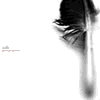 It's horrible to expect someone to fail miserably, but logical toexpect that as humans everyone has the ability to stumble a bit or fallcompletely. Realistically Nathan Amundson should have put out a recordwith at least one bad song by now. He hasn't, and the trend continueson his new five-song EP, as well as his trend of releasing material onas many labels as possible. Whether he has a huge backlog of materialto support this or he just takes up any offer to release an EP isanyone's guess, but it matters little as the songs are alwaystop-notch. Collaborations with Jessica Bailiff also seem to be aregular occurrence — and never a bad thing — as she provides backupvocals and drums on a few tracks. The only discernible difference fromother work is a slight improvement in production, as Amundson's voiceis clearer and fuller, making the harmonies with Bailiff even moredelectable. Lyrics have always been a highlight, and this releaseincludes some of the best: "You've got your own ego to feed... whycan't you ever say what you mean?" Where Debridementcomes off very introspective, these songs are more outward expression,and even storytelling to a certain extent. Threading it all together isAmundson's often delicate guitar work and passive demeanor. There'snever a true emotional distance, but rarely does he sound very moved bythe words: just plaintively presentational. The highlights are thefinal two tracks, however, as the drums on the first and the electricguitar on the second represent a more aggressive stance than I've heardfrom Rivulets in the past, and a welcome one at that. The hauntingfinal minute of "Slight Return" is alone worth the price of admission,but the whole EP proves once again what a stunning talent is present inthe here and now. More to the point, his songs are still torturous attimes, but he seems less tortured and more confident, and that could bea dangerous proposition on a third full-length.
It's horrible to expect someone to fail miserably, but logical toexpect that as humans everyone has the ability to stumble a bit or fallcompletely. Realistically Nathan Amundson should have put out a recordwith at least one bad song by now. He hasn't, and the trend continueson his new five-song EP, as well as his trend of releasing material onas many labels as possible. Whether he has a huge backlog of materialto support this or he just takes up any offer to release an EP isanyone's guess, but it matters little as the songs are alwaystop-notch. Collaborations with Jessica Bailiff also seem to be aregular occurrence — and never a bad thing — as she provides backupvocals and drums on a few tracks. The only discernible difference fromother work is a slight improvement in production, as Amundson's voiceis clearer and fuller, making the harmonies with Bailiff even moredelectable. Lyrics have always been a highlight, and this releaseincludes some of the best: "You've got your own ego to feed... whycan't you ever say what you mean?" Where Debridementcomes off very introspective, these songs are more outward expression,and even storytelling to a certain extent. Threading it all together isAmundson's often delicate guitar work and passive demeanor. There'snever a true emotional distance, but rarely does he sound very moved bythe words: just plaintively presentational. The highlights are thefinal two tracks, however, as the drums on the first and the electricguitar on the second represent a more aggressive stance than I've heardfrom Rivulets in the past, and a welcome one at that. The hauntingfinal minute of "Slight Return" is alone worth the price of admission,but the whole EP proves once again what a stunning talent is present inthe here and now. More to the point, his songs are still torturous attimes, but he seems less tortured and more confident, and that could bea dangerous proposition on a third full-length. It's surprising how little attention has been drawn to the parallelsthat exist between electronic music and lounge/exotica music. Musiciansworking in both genres often focus on creating a mood rather than onwriting songs. Much electronic music also shares the bouncy, cartoonishquality of lounge music. While many modern electronic albums could becalled "percussion" albums, it is rare that an artist actually makes adirect reference to the percussion albums that were so popular in thelate 1950's and 1960's that they actually comprised a genre of theirown. Rather than sounding as if he has raided dollar bins at thriftstores to find cool records to sample from, Percussionsshows that Charles Peirce (End) is a true enthusiast of exotica andlounge music. These 12 short tracks (each of the six titles refers totwo consecutive tracks) fuse samples of all kinds of percussioninstruments (and some brass instruments and voices) with digitalmanipulation. The effects are usually used subtly and enhance thepercussion, bringing the lounge music genre up to date. This isespecially effective during "Go", in which bongo rolls have only aslight digital edge to their sound. Rather than manipulating the sourcesounds beyond recognition, Peirce has made familiar sounds seemslightly askew. Percussions features the intricate beatprogramming that is integral to Peirce's sound, but juxtaposes it withxylophone, harp, and various drums. Although mock-1960's cover art hastruly been overused, this is one case in which that style of artworkactually complements the music. It's a lot more appropriate here thanwhen The Smithereens used a "Living Stereo" logo on a CD from 1994. Percussionssounds more like a tribute to an era than an exploitation of it. One ofits main strengths is that it reminds us that electronic music can befun. While many electronic producers take themselves too seriously,Peirce is not afraid to make fun of the genre and of himself, asevidenced by the vocal sample "Well, let's all get together and stealeach others songs" heard in "Music By Numbers." Percussionshighlights the similarities between lounge music and modern electronicmusic, while not sounding like a stylish genre exercise. While loungemusic samples were one aspect of his 2004 Ipecac CD The Sounds of Disaster, it's nice to hear Peirce fully realize a project focusing on this aspect of his sound.
It's surprising how little attention has been drawn to the parallelsthat exist between electronic music and lounge/exotica music. Musiciansworking in both genres often focus on creating a mood rather than onwriting songs. Much electronic music also shares the bouncy, cartoonishquality of lounge music. While many modern electronic albums could becalled "percussion" albums, it is rare that an artist actually makes adirect reference to the percussion albums that were so popular in thelate 1950's and 1960's that they actually comprised a genre of theirown. Rather than sounding as if he has raided dollar bins at thriftstores to find cool records to sample from, Percussionsshows that Charles Peirce (End) is a true enthusiast of exotica andlounge music. These 12 short tracks (each of the six titles refers totwo consecutive tracks) fuse samples of all kinds of percussioninstruments (and some brass instruments and voices) with digitalmanipulation. The effects are usually used subtly and enhance thepercussion, bringing the lounge music genre up to date. This isespecially effective during "Go", in which bongo rolls have only aslight digital edge to their sound. Rather than manipulating the sourcesounds beyond recognition, Peirce has made familiar sounds seemslightly askew. Percussions features the intricate beatprogramming that is integral to Peirce's sound, but juxtaposes it withxylophone, harp, and various drums. Although mock-1960's cover art hastruly been overused, this is one case in which that style of artworkactually complements the music. It's a lot more appropriate here thanwhen The Smithereens used a "Living Stereo" logo on a CD from 1994. Percussionssounds more like a tribute to an era than an exploitation of it. One ofits main strengths is that it reminds us that electronic music can befun. While many electronic producers take themselves too seriously,Peirce is not afraid to make fun of the genre and of himself, asevidenced by the vocal sample "Well, let's all get together and stealeach others songs" heard in "Music By Numbers." Percussionshighlights the similarities between lounge music and modern electronicmusic, while not sounding like a stylish genre exercise. While loungemusic samples were one aspect of his 2004 Ipecac CD The Sounds of Disaster, it's nice to hear Peirce fully realize a project focusing on this aspect of his sound.  In 1986 the Virgin Prunes released The Moon Looked Down and Laughed, an album that turned out to be the band's swan song. (The group released a collection of outtakes and rare tracks later that year, but never again entered the studio.) Considered in context with the rest of the Prunes' albums reissued by Mute, The Moon was clearly a concerted attempt at a much more commercial sound than anything the band had previously attempted.
In 1986 the Virgin Prunes released The Moon Looked Down and Laughed, an album that turned out to be the band's swan song. (The group released a collection of outtakes and rare tracks later that year, but never again entered the studio.) Considered in context with the rest of the Prunes' albums reissued by Mute, The Moon was clearly a concerted attempt at a much more commercial sound than anything the band had previously attempted.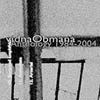 I find it odd that this collection is named Anthology,even though it consists of previously unreleased tracks. The onlytracks on this disc that were previously released surfaced onlong-deleted cassettes issued on obscure European labels. To me, theterm "anthology" denotes a representative collection documenting anartist's career, drawn from works previously available. I am perplexedat the claim that this collection of outtakes, live tracks and othermarginalia might constitute a proper documentation of the artist'scareer. Not nearly as perplexed, though, as when I attempt to ponderwho could possibly be interested enough in Vidna Obmana's music to havekept this artist afloat for the past two decades. Mr. Obmana ascribesto that common viewpoint that the term "ambient" must be synonymouswith "boring," creating album after unremarkable album filled to thebrim with dull New Age keyboards, drones and loops, with the occasionalforay into insulting ethnic plagiarism. This collection was recentlyreleased on the eternally lame Projekt, whose only standards fordeciding what their label will release appears to be directly dependanton how utterly, excruciatingly dull the music is. The tracks on thisanthology run the gamut from a mildly uninteresting retread ofThrobbing Gristle ("Ecstasy") to a violently uninteresting rip-off ofCoil ("Soul Dislocation"). In between is lots of fodder for NPR's Hearts of Space,Vidna Obmana thoughtfully providing crossfaded transitions from eachtrack to the next, so that the whole 72 minutes feels like one long,homogenized puddle of rancid fairy spooge. This music might work quitewell as a soundtrack for your local coven's next drawing down of themoon ceremony, or it might be perfect muzak for the waiting room ofyour local aura-reading and colonics center, but it fails in everyother sense. It blunts and smooths the edges off any sound that mightjar the listener out of sleepy complacence, leaving only anundifferentiated, quivering mass of odorless, flavorless gelatin in itswake. Suspended inside the unappetizing Jell-O mold are inedible chunksof musical ideas that might have been interesting had they not beentrapped inside this mess.
I find it odd that this collection is named Anthology,even though it consists of previously unreleased tracks. The onlytracks on this disc that were previously released surfaced onlong-deleted cassettes issued on obscure European labels. To me, theterm "anthology" denotes a representative collection documenting anartist's career, drawn from works previously available. I am perplexedat the claim that this collection of outtakes, live tracks and othermarginalia might constitute a proper documentation of the artist'scareer. Not nearly as perplexed, though, as when I attempt to ponderwho could possibly be interested enough in Vidna Obmana's music to havekept this artist afloat for the past two decades. Mr. Obmana ascribesto that common viewpoint that the term "ambient" must be synonymouswith "boring," creating album after unremarkable album filled to thebrim with dull New Age keyboards, drones and loops, with the occasionalforay into insulting ethnic plagiarism. This collection was recentlyreleased on the eternally lame Projekt, whose only standards fordeciding what their label will release appears to be directly dependanton how utterly, excruciatingly dull the music is. The tracks on thisanthology run the gamut from a mildly uninteresting retread ofThrobbing Gristle ("Ecstasy") to a violently uninteresting rip-off ofCoil ("Soul Dislocation"). In between is lots of fodder for NPR's Hearts of Space,Vidna Obmana thoughtfully providing crossfaded transitions from eachtrack to the next, so that the whole 72 minutes feels like one long,homogenized puddle of rancid fairy spooge. This music might work quitewell as a soundtrack for your local coven's next drawing down of themoon ceremony, or it might be perfect muzak for the waiting room ofyour local aura-reading and colonics center, but it fails in everyother sense. It blunts and smooths the edges off any sound that mightjar the listener out of sleepy complacence, leaving only anundifferentiated, quivering mass of odorless, flavorless gelatin in itswake. Suspended inside the unappetizing Jell-O mold are inedible chunksof musical ideas that might have been interesting had they not beentrapped inside this mess.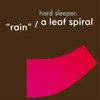 It's important to pace a record properly so that it doesn't becomestiff and monotonous. Peter Maybury begins his twenty-three minuteopener with a steady, meandering, and almost viscous series of soundsall seperated from eachother and mostly melodic. The charm of the pianoplaying and the babbling computer-speak all hint that this is going tobe a slow ride through electronic composition; everything will dependon how well the sounds are arranged in relation to eachother. Not muchhappens though and the sounds don't interact with eachother in anyinteresting manner. There are moments of unattenuated beauty, but thealbum simply never changes. To make matters worse, I tend to think thatopen-ended albums like this need some kind of unique palette, somethingakin to a unique signature. Many of the songs on these five songs soundfar too familiar, as though they've become parts of an electronic bankavailable to everyone who has a computer and a desire to move varioussamples around eachother. After about ten minutes of listening to"Rain" a second time, I was feeling quite anxious to move on. Thefour-part "A Leaf Spiral" doesn't provide anything in the way ofrelief, though. They're very much a "more of the same" series of songsand don't manage to make anything sound or feel any more exciting. Ilove lush soundscapes and I enjoy relaxing to very minimal-type music,but this just doesn't cut it. The sounds that were picked forutilization are lame at times and there's no emotional or visualcontent. In some ways the rather dull album art says everythig thatneeds to be said about this album.
It's important to pace a record properly so that it doesn't becomestiff and monotonous. Peter Maybury begins his twenty-three minuteopener with a steady, meandering, and almost viscous series of soundsall seperated from eachother and mostly melodic. The charm of the pianoplaying and the babbling computer-speak all hint that this is going tobe a slow ride through electronic composition; everything will dependon how well the sounds are arranged in relation to eachother. Not muchhappens though and the sounds don't interact with eachother in anyinteresting manner. There are moments of unattenuated beauty, but thealbum simply never changes. To make matters worse, I tend to think thatopen-ended albums like this need some kind of unique palette, somethingakin to a unique signature. Many of the songs on these five songs soundfar too familiar, as though they've become parts of an electronic bankavailable to everyone who has a computer and a desire to move varioussamples around eachother. After about ten minutes of listening to"Rain" a second time, I was feeling quite anxious to move on. Thefour-part "A Leaf Spiral" doesn't provide anything in the way ofrelief, though. They're very much a "more of the same" series of songsand don't manage to make anything sound or feel any more exciting. Ilove lush soundscapes and I enjoy relaxing to very minimal-type music,but this just doesn't cut it. The sounds that were picked forutilization are lame at times and there's no emotional or visualcontent. In some ways the rather dull album art says everythig thatneeds to be said about this album. 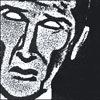 You Hold the World Like a Gun is Texan Greg Reynaud's selfdescribed "actualization of maximum potential." Loosely translated,that means it's the results of his first solo foray into the studioafter doing beats as a part of electropop outfit Lovetron and spaceyboombap minstrels The Town Drunks. So, now that his potential isactualized—and Reynaud has already proven he does indeed hold promisingpotential as a producer—he presents a dense, mysterious five track,nineteen-minute EP that thumps and pounds its way from track to track,occasionally pausing to reflect but nevertheless holding a boot to yourthroat and not letting go until it's done. Among the slick break beatsand crashing hi hats Reynaud flawlessly slips in the obligatoryotherwise-out-of-place sample, whether it be a few guitar chords, apiano key, a jazz break or even a Darth Vader inhale/exhale.Ostensibly, the EP is a concept album concerning the current Americanpolitical situation, a fact that isn't necessarily clear with a listenand not much clearer when perusing the liner notes. Still, what is aknown known (thank you, Department of Defense) is that Reynaud knowswhat he's doing, and perhaps there is some truth to that whole"actualization of potential" line. Released from the bounds that comewith working with other musicians, Reynaud is able to let hismultitalented production skills roam free, with compelling results.Most impressive, however, is his ability to tread the thin line betweenimprovisation and complete anarchy. His music wanders, but neveraimlessly. He is able to make out of what might be an unrecognizablemishmash with another producer into a thrilling blend of surprisinglyorchestrated adrenaline-laced sound.
You Hold the World Like a Gun is Texan Greg Reynaud's selfdescribed "actualization of maximum potential." Loosely translated,that means it's the results of his first solo foray into the studioafter doing beats as a part of electropop outfit Lovetron and spaceyboombap minstrels The Town Drunks. So, now that his potential isactualized—and Reynaud has already proven he does indeed hold promisingpotential as a producer—he presents a dense, mysterious five track,nineteen-minute EP that thumps and pounds its way from track to track,occasionally pausing to reflect but nevertheless holding a boot to yourthroat and not letting go until it's done. Among the slick break beatsand crashing hi hats Reynaud flawlessly slips in the obligatoryotherwise-out-of-place sample, whether it be a few guitar chords, apiano key, a jazz break or even a Darth Vader inhale/exhale.Ostensibly, the EP is a concept album concerning the current Americanpolitical situation, a fact that isn't necessarily clear with a listenand not much clearer when perusing the liner notes. Still, what is aknown known (thank you, Department of Defense) is that Reynaud knowswhat he's doing, and perhaps there is some truth to that whole"actualization of potential" line. Released from the bounds that comewith working with other musicians, Reynaud is able to let hismultitalented production skills roam free, with compelling results.Most impressive, however, is his ability to tread the thin line betweenimprovisation and complete anarchy. His music wanders, but neveraimlessly. He is able to make out of what might be an unrecognizablemishmash with another producer into a thrilling blend of surprisinglyorchestrated adrenaline-laced sound. After several years as a member of the Chicago UndergroundDuo/Trio/Quartet/Orchestra, along with several recordings as acompetent and inventive sideman, drummer Chad Taylor has penned andrecorded a disc's worth of tunes under the name Active Ingredients. Attimes a sextet featuring Underground partner Rob Mazurek on cornet andSteve Swell (William Parker/Baron Down) on trombone, it's easy to viewTitrationas a free jazz recording due to the lack of any chordal instrumentsoutlining progressions and form. As a leader, Taylor's unique,polyrhythmic drive and fluid performance are central, although this isnot your stereotypical drummer record. His approach and outputon the kit is dynamic and very musical, which is not surprising as he'dbeen a classical guitarist in his youth; the same musical sensibilitycomes through in his compositions. "Song For Dyani" opens withblistering latin rhythms and busy, staccato upright bass laying thefoundation for unison horns to state the sweet and slurring melodybefore breaking off for both individual and simultaneous soloing. Thelightning fast cross stick and tom fills kicking off "Slate" areaugmented by percussionist Avreeayl Ra's fills to convey a true Africanensemble feel for saxophone shrills and trills play off. Bassist TomAbbs' melodic lines set things in motion off the top of "ModernMythology" which in turn supports a brief big band ensemble motifbefore stripping down for sax soloing an unison crazy-go-nutsexplorations. Taylor's use of bare hands, mallets and sticks on hissolo performance "Dependent Origination" convey several different tonesand textures. Having spent a great deal of time listening to him onseveral recordings and seeing him in performance on several occasions,it's safe to say that although spontaneity figures heavily in such asituation, his ability to convey melodic ideas and structure isuncanny. The group assembled on Titration are all competentmusicians and soloists that give strong direction to Taylor's sometimesminimal motifs. The excitement generated in performance for thisrecording has them coloring outside the lines with a free jazzapproach, but without going completely off the page into cacophony.
After several years as a member of the Chicago UndergroundDuo/Trio/Quartet/Orchestra, along with several recordings as acompetent and inventive sideman, drummer Chad Taylor has penned andrecorded a disc's worth of tunes under the name Active Ingredients. Attimes a sextet featuring Underground partner Rob Mazurek on cornet andSteve Swell (William Parker/Baron Down) on trombone, it's easy to viewTitrationas a free jazz recording due to the lack of any chordal instrumentsoutlining progressions and form. As a leader, Taylor's unique,polyrhythmic drive and fluid performance are central, although this isnot your stereotypical drummer record. His approach and outputon the kit is dynamic and very musical, which is not surprising as he'dbeen a classical guitarist in his youth; the same musical sensibilitycomes through in his compositions. "Song For Dyani" opens withblistering latin rhythms and busy, staccato upright bass laying thefoundation for unison horns to state the sweet and slurring melodybefore breaking off for both individual and simultaneous soloing. Thelightning fast cross stick and tom fills kicking off "Slate" areaugmented by percussionist Avreeayl Ra's fills to convey a true Africanensemble feel for saxophone shrills and trills play off. Bassist TomAbbs' melodic lines set things in motion off the top of "ModernMythology" which in turn supports a brief big band ensemble motifbefore stripping down for sax soloing an unison crazy-go-nutsexplorations. Taylor's use of bare hands, mallets and sticks on hissolo performance "Dependent Origination" convey several different tonesand textures. Having spent a great deal of time listening to him onseveral recordings and seeing him in performance on several occasions,it's safe to say that although spontaneity figures heavily in such asituation, his ability to convey melodic ideas and structure isuncanny. The group assembled on Titration are all competentmusicians and soloists that give strong direction to Taylor's sometimesminimal motifs. The excitement generated in performance for thisrecording has them coloring outside the lines with a free jazzapproach, but without going completely off the page into cacophony.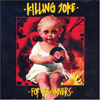 If I was making a compilation to introduce a friend to the work of Killing Joke, it's track listing would overlap with that of For Beginners by only three tracks, "Fun & Games", "The Wait" and "Night Time". Never before have I encountered such a willfully obscure selection masquerading as a perfect entry point to a band's back catalog.
If I was making a compilation to introduce a friend to the work of Killing Joke, it's track listing would overlap with that of For Beginners by only three tracks, "Fun & Games", "The Wait" and "Night Time". Never before have I encountered such a willfully obscure selection masquerading as a perfect entry point to a band's back catalog.
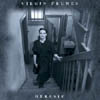 This was originally released in 1982 on the L'Invitation au Suicide label as two 10" singles packaged together in a box which also contained several booklets illustrating the perverse marriage of aesthetics, insanity and filth which characterized the Virgin Prunes at this artistic phase. Mute's reissue does a flawless job of presenting the music, which is digitally restored and remastered, both parts presented together on a single disc. However, they have chosen not to reprint the art booklets originally included with the set, which is unfortunate for a band as visually oriented as the Prunes.
This was originally released in 1982 on the L'Invitation au Suicide label as two 10" singles packaged together in a box which also contained several booklets illustrating the perverse marriage of aesthetics, insanity and filth which characterized the Virgin Prunes at this artistic phase. Mute's reissue does a flawless job of presenting the music, which is digitally restored and remastered, both parts presented together on a single disc. However, they have chosen not to reprint the art booklets originally included with the set, which is unfortunate for a band as visually oriented as the Prunes.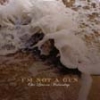 On their debut album, John Tejada and Takeshi Nishimoto displayed aclever grasp of electronic-tinged instrumental music, virtuoso-style,with tasty guitar and bass flourishes layered over real drums andwhatever the laptop pushed out as the master controlled it. They'vecontinued their regular regimen of playing and recording together onWednesdays, no matter what their schedules had in store, and the fruitsof that labor, their second record, receives its title from the veryprocess that produced it. With these songs, it seems thelaptop-produced elements have become more of a basis for the songs,rather than skeletal remains that were thrown in for flavor. Theopening track, "Walk Through Walls," starts with a manipulated andglitched sample that provides a basic beat, then "real" instrumentstake it over, guitar/bass/drums in full lock-on mode with gorgeoussolo-like flourishes. Every once in a while that sample or anotherreturns, just as a reminder that it was the catalyst, but it's mostlybusiness as usual. The two pile on the processed guitars, variousguitar tracks, and the slapped bass, add some delay and echo effects,and stride comfortably towards the finish line, knowing full wellthey're ahead. "Every Moment is Ours" begins much in the same regard,with computer magic and deep bass followed by gentle guitar, thenhypnotizing bass chords and that familiar guitar tone join the fun.Halfway through, live drums kick in briefly, only to relent to theirmore processed brethren. Ultimately, the process is slightly differenton this record, but the music is very much the same, which is to sayclearly produced and recorded and excellently played. The songwritingis a bit limited to the aforementioned format, however, and though thechill-out lounge style form bursts into jazz-like improvisations, thebasic structure is very much consistent with most songs, as is the toneand presentation. That's the only complaint, however, and it's not muchof one, as the songs are still pleasant enough to listen to. It wouldjust help to hear a bit more variety in this art, and not have to waituntil the next day in the week to get it.
On their debut album, John Tejada and Takeshi Nishimoto displayed aclever grasp of electronic-tinged instrumental music, virtuoso-style,with tasty guitar and bass flourishes layered over real drums andwhatever the laptop pushed out as the master controlled it. They'vecontinued their regular regimen of playing and recording together onWednesdays, no matter what their schedules had in store, and the fruitsof that labor, their second record, receives its title from the veryprocess that produced it. With these songs, it seems thelaptop-produced elements have become more of a basis for the songs,rather than skeletal remains that were thrown in for flavor. Theopening track, "Walk Through Walls," starts with a manipulated andglitched sample that provides a basic beat, then "real" instrumentstake it over, guitar/bass/drums in full lock-on mode with gorgeoussolo-like flourishes. Every once in a while that sample or anotherreturns, just as a reminder that it was the catalyst, but it's mostlybusiness as usual. The two pile on the processed guitars, variousguitar tracks, and the slapped bass, add some delay and echo effects,and stride comfortably towards the finish line, knowing full wellthey're ahead. "Every Moment is Ours" begins much in the same regard,with computer magic and deep bass followed by gentle guitar, thenhypnotizing bass chords and that familiar guitar tone join the fun.Halfway through, live drums kick in briefly, only to relent to theirmore processed brethren. Ultimately, the process is slightly differenton this record, but the music is very much the same, which is to sayclearly produced and recorded and excellently played. The songwritingis a bit limited to the aforementioned format, however, and though thechill-out lounge style form bursts into jazz-like improvisations, thebasic structure is very much consistent with most songs, as is the toneand presentation. That's the only complaint, however, and it's not muchof one, as the songs are still pleasant enough to listen to. It wouldjust help to hear a bit more variety in this art, and not have to waituntil the next day in the week to get it.


